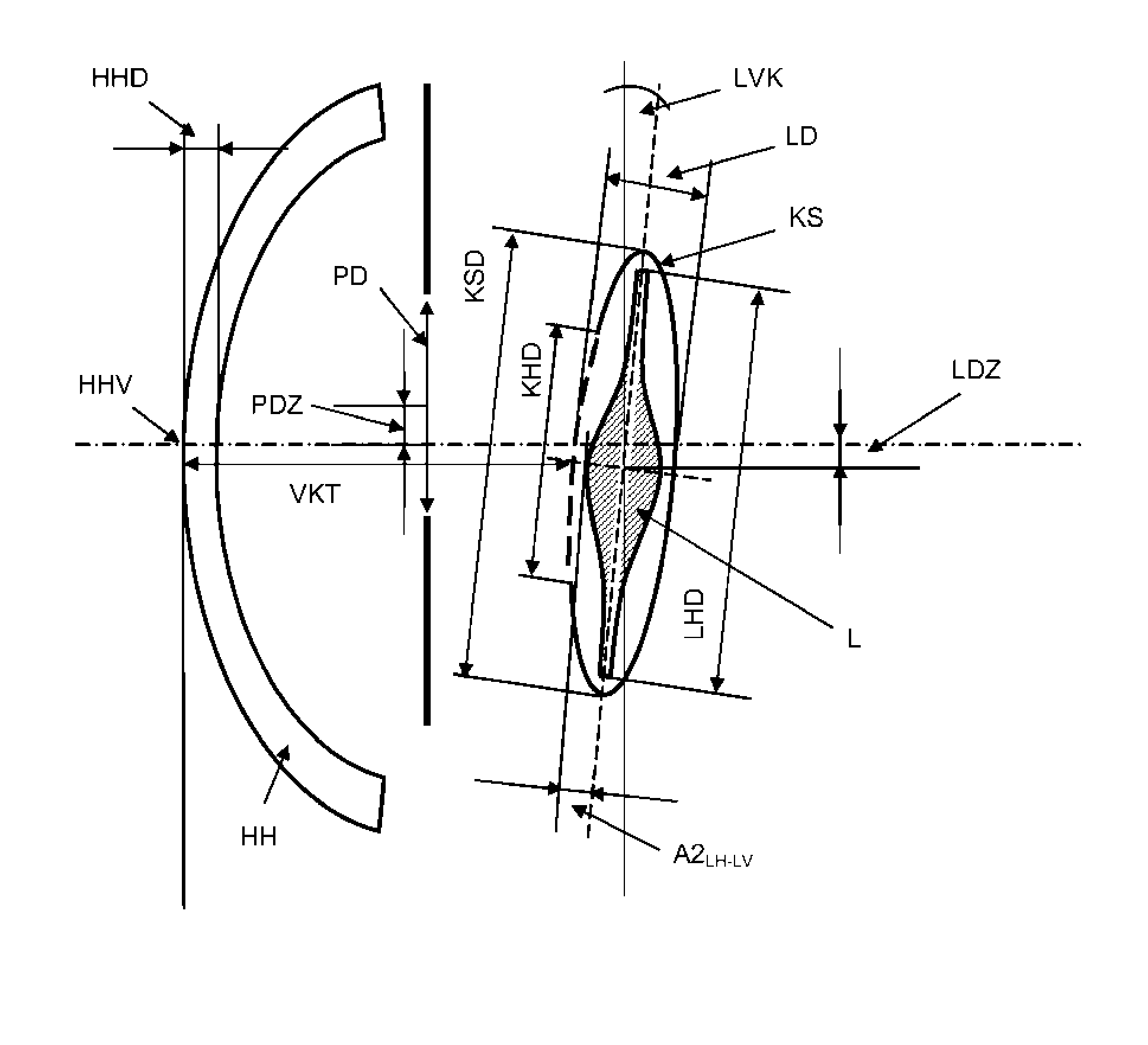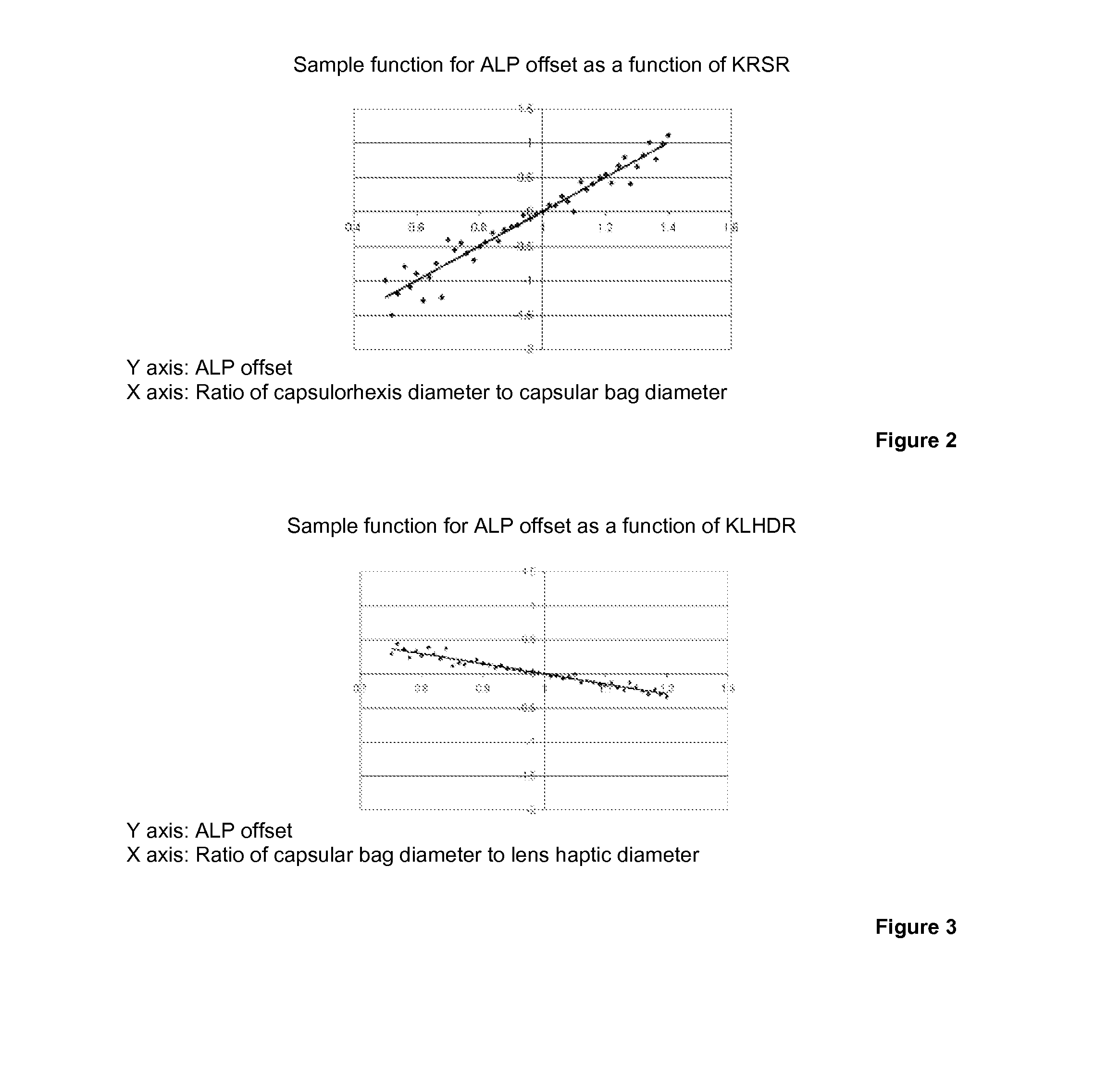Method for optimized prediction of the postoperative anatomical position of an intraocular lens implanted in a pseudopakic eye
an intraocular lens and pseudopakic eye technology, applied in intraocular lenses, medical science, diagnostics, etc., can solve the problems of statistical errors that cannot be fully empirically corrected, statistical errors that cannot be partially increased, and none of the known methods can do without empirical correction factors. to achieve the effect of optimizing the prediction of the postoperative anatomical position of the lens
- Summary
- Abstract
- Description
- Claims
- Application Information
AI Technical Summary
Benefits of technology
Problems solved by technology
Method used
Image
Examples
first embodiment
[0034]In the method according to the invention, the postoperative, anatomical lens position LPan-post results from the following formula:
LPan-post=VKT−HHD+A1KSA-LV (2)
in which[0035]VKT characterizes the anterior chamber[0036]HHD characterizes the corneal thickness and[0037]A1KSA-LV characterizes the distance between the capsular bag equator and the anterior surface of the lens and distance A1KSA-LV stems from the following formula:
A1KSA-LV=(LD / 3−A2LH-LV)+f (V1KSD-KHD)+f (V2KSD-LHD)+f (LHT) (3)
in which[0038]LD characterizes the lens thickness,[0039]A2LH-LV characterizes the distance between lens haptics and the anterior surface of the lens[0040]f(V1KSD-KHD) characterizes a function of the ratio of the capsule sack diameter to the capsulorhexis,[0041]f(V2KSD-KHD) characterizes a function of the ratio of the capsular bag diameter to the lens haptic and[0042]f(LHT) characterizes a function of the lens haptic-type
[0043]Accordingly, the ratios V1KSD-KHD and V2KSD-LHD, as well as the i...
second embodiment
[0059]In the method according to the invention, the postoperative, anatomic lens position (LLan-post) can be described by the following three parameters:[0060]LDZ—horizontal and vertical decentration of the lens,[0061]LVK—horizontal and vertical tilting of the lens and[0062]PBM—center of the pupil region that can be used in the calculation.
[0063]Accordingly, the horizontal and vertical decentration LDZ of the lens results from the following formula:
LDZ=LDZeye×f(LDZeye) (6)
in which[0064]LDZeye characterizes the horizontal and vertical decentration of the actual eye lens and[0065]f(LDZeye) characterizes an empirical function of the decentration of the actual eye lens
wherein for example the pathology, the ethnic origin, sex, and age can be taken into account as empirical scaling functions.
[0066]Correspondingly, the horizontal and vertical tilting LVK of the lens results from the following formula:
LVK=LVKeye×f(LVKeye) (7)
in which[0067]LVKeye characterizes the horizontal and vertical...
PUM
 Login to View More
Login to View More Abstract
Description
Claims
Application Information
 Login to View More
Login to View More - R&D
- Intellectual Property
- Life Sciences
- Materials
- Tech Scout
- Unparalleled Data Quality
- Higher Quality Content
- 60% Fewer Hallucinations
Browse by: Latest US Patents, China's latest patents, Technical Efficacy Thesaurus, Application Domain, Technology Topic, Popular Technical Reports.
© 2025 PatSnap. All rights reserved.Legal|Privacy policy|Modern Slavery Act Transparency Statement|Sitemap|About US| Contact US: help@patsnap.com



